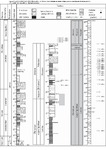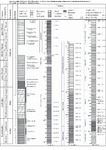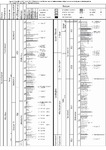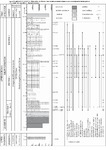Effects of the late Permian mass extinction on chondrichthyan palaeobiodiversity and distribution patterns
| dc.contributor.supervisor | Twitchett, Richard J. | |
| dc.contributor.author | Koot, Martha Beatrijs | |
| dc.contributor.other | School of Geography, Earth and Environmental Sciences | en_US |
| dc.date.accessioned | 2013-07-26T15:08:05Z | |
| dc.date.available | 2013-07-26T15:08:05Z | |
| dc.date.issued | 2013 | |
| dc.identifier | 10191827 | en_US |
| dc.identifier.uri | http://hdl.handle.net/10026.1/1584 | |
| dc.description.abstract |
The Late Permian mass extinction occurring at 252.6 ± 0.2 Ma is the most severe Phanerozoic extinction event and was preceded and followed by additional disturbances. Patterns and processes of extinction and recovery of marine vertebrates have been little studied compared to marine invertebrates. This project focuses on Chondrichthyes, which, together with other marine fish, appeared to have been relatively unaffected by the extinction, while most of their supporting ecosystem collapsed. This study explores the authenticity of extinction among chondrichthyans and possible explanations for the observed patterns, because extinction severities on the taxonomic and ecological levels may be decoupled or the quality of the fossil record may be variable. The presented analyses are based on a newly compiled database that supercedes older compilations. It is supplemented by material obtained from numerous localities globally, which includes newly described taxa. Hence, this study attempts to be the most up-to-date and comprehensive analysis of patterns and trends in chondrichthyan diversity and distribution that is currently available. The data demonstrate that, despite some variability in the Permian–Triassic chondrichthyan fossil record, the Lopingian record is shown to be of adequate completeness and, furthermore, range-through genus diversity is not significantly correlated with the number of taxonomic occurrences. Genus diversity declined from the mid-Guadalupian following an increasing extinction rate, which intensified throughout the Lopingian and thus supports a combined overall extinction as a result of the end-Guadalupian and Late Permian events. Furthermore, global distribution of chondrichthyan diversity shifted away from tropical regions and particularly the Boreal Sea gained in diversity, tracking extinction and recovery in marine benthic invertebrates in both time and space. No significant dependence of extinction on taxonomic structure or palaeoecological traits exists, which suggests proportional losses, except during the end-Smithian crisis. Also, a significant size decrease is absent among Permian/Triassic boundary-crossing taxa, suggesting selective loss of large-sized chondrichthyans rather than adaptive size decrease. Ultimately, the Hybodontiformes, Neoselachii, Xenacanthiformes and Holocephali are identified as the survivors, which possessed a varying combination of characteristics such as moderate body-size, adaptation to brackish/freshwater environments, benthic or generalist littoral (clutching) feeding behaviour, and a wide palaeogeographic range. | en_US |
| dc.description.sponsorship | VSBfonds (Utrecht), Prins Bernhard Cultuurfonds (Amsterdam), Stichting Dr. Hendrik Muller Vaderlandsch Fonds (The Hague), Stichting Fonds Dr. Catharine van Tussenbroek (Utrecht), SYNTHESYS, Sylvester-Bradley Award from the Palaeontological Association, Japan Society for the Promotion of Science, Danish Natural Science Research Council Framework. | en_US |
| dc.language.iso | en | en_US |
| dc.publisher | University of Plymouth | en_US |
| dc.subject | Chondrichthyes | en_US |
| dc.subject | Permian | en_US |
| dc.subject | Triassic | en_US |
| dc.subject | Mass extinction | en_US |
| dc.subject | Biodiversity | en_US |
| dc.subject | Taxonomy | en_US |
| dc.title | Effects of the late Permian mass extinction on chondrichthyan palaeobiodiversity and distribution patterns | en_US |
| dc.type | Thesis | |
| plymouth.version | Full version | en_US |
| dc.identifier.doi | http://dx.doi.org/10.24382/4666 |
Files in this item
This item appears in the following Collection(s)
-
01 Research Theses Main Collection
Research Theses Main






